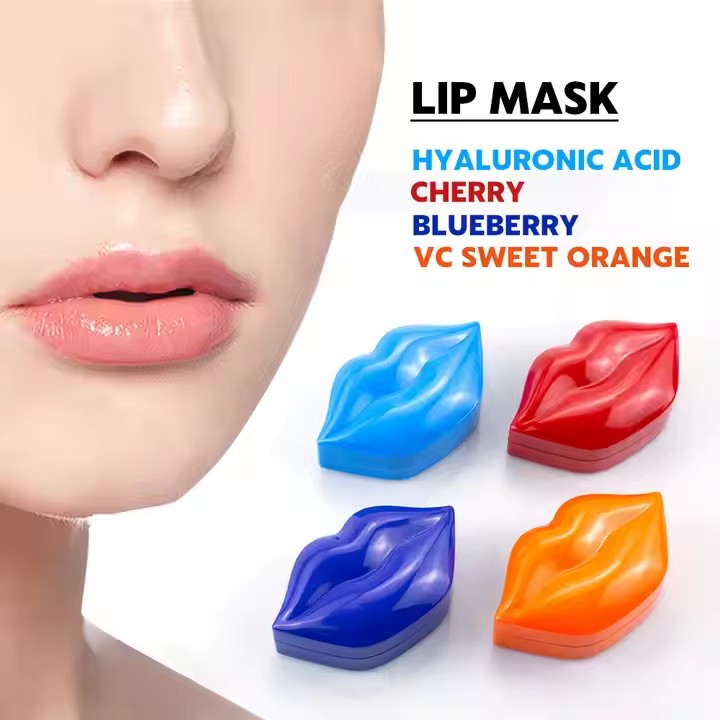Although lip masks and regular facial masks both belong to the family of skin care products, they have significant differences in terms of application areas, ingredient composition, efficacy, texture and dosage form, as well as application frequency. They are like two separate skin care “teams” each performing their own duties, providing precise care for the skin.
From the perspective of the application area, the lip mask is the exclusive “guardian” of the lip skin, only acting on this specific area of the lips. Ordinary facial masks, on the other hand, are the “all-round managers” of facial skin, covering a wide range of areas such as the cheeks, forehead, nose and chin, and taking on the responsibility of caring for the entire face.
In terms of composition, the two have distinct differences. The formula of the lip mask pays more attention to gentleness and moisturization. Common Vaseline and beeswax can form a protective film on the surface of the lips, effectively locking in moisture. Vitamin E, olive oil, jojoba oil and other ingredients provide nutrients for the lips and help repair damage. In contrast, the ingredients of ordinary facial masks are more complex and diverse, with targeted ingredients added according to different functions. For example, hydrating and moisturizing masks will add a large amount of hyaluronic acid; Whitening masks will contain whitening ingredients such as nicotinamide and vitamin C. Anti-aging masks use substances such as collagen and peptides to meet the care needs of facial skin in different dimensions.

In terms of efficacy, lip masks and regular facial masks each have their own strengths. The lip mask has a particularly outstanding ability to deeply moisturize and repair damaged areas. It can effectively alleviate problems such as dryness, peeling, and cracking of the lips. Long-term use can also fade lip lines and brighten the lip color. The benefits of ordinary facial masks are more diverse. They can hydrate and moisturize to improve facial dehydration, whiten and fade spots to brighten the complexion and reduce pigmentation, resist aging and wrinkles to help reduce wrinkles and enhance facial skin elasticity, clean and control oil to absorb oil and clean pores, and soothe sensitive skin to soothe red and itchy skin.
Texture and dosage form are also important characteristics for distinguishing the two. Lip masks are mostly in the form of cream, gel or patches, with a thick texture that is convenient for forming a closed moisturizing film on the lips. Common types such as canned cream, tubular lip balm-style lip masks and individually packaged patch lip masks offer consumers a wide range of choices. Ordinary facial masks are most commonly made of liquid essence-soaked fabric. There are also different forms such as mud, gel, and paste. There are various types of masks including patch masks, mud masks, sleeping masks, and peel-off masks, which meet the needs of different skin types and care scenarios.
There are also certain considerations regarding the frequency and duration of use. The frequency of using lip masks is relatively flexible. Generally, it is used 2 to 3 times a week. When the lips are particularly dry, it can be used daily. The patch type lip mask is applied for 10 to 15 minutes, and the cream type lip mask can also be used as a sleeping lip mask overnight. The use of regular facial masks requires stricter control. Patch masks should be used 2 to 3 times a week, and cleansing mud masks once a week. Moreover, each type of mask has a corresponding usage time limit to avoid skin damage caused by improper use.
In conclusion, although lip masks and regular facial masks are both skin care products, they have detailed and significant differences in various aspects. We should choose and use these two types of products reasonably based on the specific conditions of our lip and facial skin, so as to keep our skin healthy and radiant at all times.
Post time: Jun-21-2025










